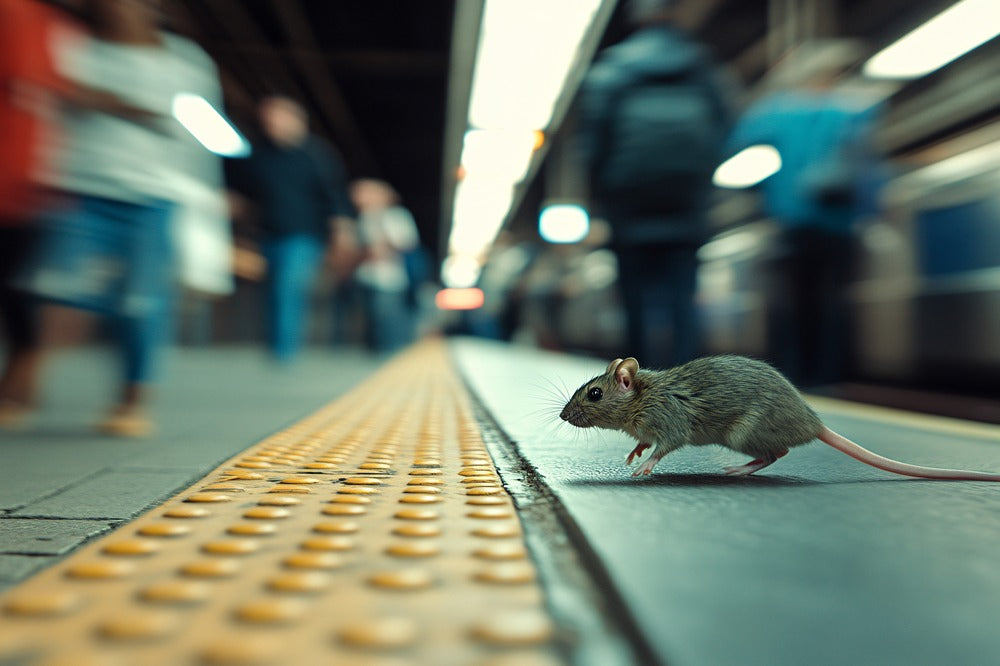
Top 10 Most Rodent-Infested Cities in America (2025 Update)
Share
Anyone who’s ever spent time in a major city knows the frustration of living amongst rodents. They’re in the subways, they’re in the sewers, they’re in the alleyways and in the trash. They’re everywhere. But who has it worst?
Every year, both Orkin and Terminix release data on the number of rodent-related services they’ve completed to give a general idea of the most rodent-infested cities in America. While their rankings differ slightly, the top of the lists are unsurprising, with the country’s largest metropolitan areas leading the way.
Here, we’ve averaged out the two lists to create a comprehensive look at which cities face the largest rodent problems:
1. New York City
(Terminix: 1 | Orkin: 3)
Pizza Rat … need we say more?
A recent study claims that there are now over 3 million rats in NYC — a 50 percent increase since 2010. The problem has grown so large that in 2023, the city appointed its first “Rat Czar” to combat the issue full-time.
2. Los Angeles
(Terminix: 3 | Orkin: 2)
While rodents have long been a problem for the cold-weather, older cities of the Northeast, the urban areas of California have grown into hotspots as well. Some have pointed to the state’s passing of the Poison-Free Wildlife Act, which banned most rat poisons, as a possible accelerant.
3. San Francisco
(Terminix: 2 | Orkin: 4)
In recent years, San Francisco has seen its rodent population balloon. According to a study by Science Advances, the city has experienced a 10% increase in rats over the last 12 years — largely due to rising urban temperatures.
4. Chicago
(Terminix: 6 | Orkin: 1)
While ranking slightly lower on Terminix’s list, Chicago topped Orkin’s list of “Rattiest Cities in America” for the 10th straight year. Orkin reports: “Chicago’s abundance of alleys provides rodents with hidden havens, offering plenty of space to hide while feasting on trash.”
5. Washington D.C.
(Terminix: 5 | Orkin: 5)
By most accounts, Washington D.C.’s rodent problem is bad — and getting worse. A 2024 study by RentHop found that the nation’s capital had the highest number of rat complaints per 10,000 residents.
6. Philadelphia
(Terminix: 4 | Orkin: 7)
Few cities can claim a more pervasive rodent problem than Philadelphia. In fact, according to Pest Control Technology, 29.6 percent of households in Philadelphia County reported some sort of rodent problem in 2024 — the highest in the nation.
7. Denver
(Terminix: 13 | Orkin: 6)
Representing the Mountain region, Denver’s rodent problem proves that rats and mice are a nationwide concern. On several occasions in the last five years, the city has even closed down public parks due to infestations.
8. Baltimore
(Terminix: 11 | Orkin: 9)
The rodent problem in Baltimore has escalated to the point that the city has begun using rat contraceptives in place of traditional bait poisons to better manage its growing population.
9. Boston
(Terminix: 8 | Orkin: 12)
While Boston’s rodent complaints actually dropped from 2022 to 2023, it remains one of the country’s most-infested cities. A 2024 report found that all of Boston’s neighborhoods still face serious rodent concerns, prompting the city to build an action plan.
10. Detroit
(Terminix: 16 | Orkin: 8)
Detroit has climbed Orkin’s rankings each of the last three years, prompting the city to spend upwards of $300,000 annually combating the problem — including providing free traps and bait stations to residents.

Why You Should Be Worried About Rodents
Rodents are more than a nuisance — they can spread dangerous, even deadly, diseases through their droppings and other waste. It’s extremely important to take safety precautions, including wearing gloves and a mask, when disposing of rodent debris.
Vehicle owners — especially those who store their cars, vans, or RVs for extended periods — are also at risk for costly damage. It’s estimated that in the U.S. alone, mice and rats cause over $200 million in vehicle repairs each year.
Signs of An Infestation:
- Mouse droppings: Small, dark pellets near walls or hidden corners
- Gnawed materials: Chewed cardboard, insulation, packaging, or car upholstery
- Strange smells: A strong ammonia-like odor from mouse urine
- Food stashes: Crumbs, seeds, or pet food tucked away in odd places
How to Protect Your Property from Rodents
- Seal up entry points: Rodents can squeeze through gaps around windows, doors, vents, and utility lines. Perform a seasonal check and seal cracks with steel wool and caulk.
- Keep food and trash secure: Use garbage cans with tight lids and store all pantry items in sealed containers to avoid attracting rodents.
- Tidy up: Unnecessary debris — including trash, compost piles, and overgrown vegetation — can serve as ideal nesting material for mice and rats.
- Use preventative tools: From ultrasonic repellents and peppermint oil to bait stations and rodent-proof barriers like the Box-Kat mouse barrier, prevention is always cheaper (and easier) than dealing with an active infestation.



